At Ristretto, we strongly believe in effective scientific communication. Our foundational trainings cover key concepts:
- The science of scientific writing: storytelling facts, removing junk;
- Inspiring others: prepare and deliver the best presentation of your life… every time;
- Figures of evidence: uncover the real value of your data by making effective graphs.
In addition, we continuously develop specific trainings tailored to your needs. Don’t hesitate to contact us.
The science of scientific writing: storytelling facts, removing junk
 As a scientist, researcher or professional it is not enough to excel at your daily tasks: it is also of utmost importance to be able to effectively write down your work in the form of conference articles, applications, proposals, reports, thesis, etc. Sadly though, scientific reports or articles are often hard to read. Most of the people assume that it is due to the complexity of the concepts, data and analysis. In this workshop, you will learn that with the right structure in place and by applying a series of communication principles, complex ideas can be communicated with clarity, without oversimplifying scientific issues.
As a scientist, researcher or professional it is not enough to excel at your daily tasks: it is also of utmost importance to be able to effectively write down your work in the form of conference articles, applications, proposals, reports, thesis, etc. Sadly though, scientific reports or articles are often hard to read. Most of the people assume that it is due to the complexity of the concepts, data and analysis. In this workshop, you will learn that with the right structure in place and by applying a series of communication principles, complex ideas can be communicated with clarity, without oversimplifying scientific issues.
The training combines exercises with short lectures dealing with the following topics:
- Choose the right title for your work
- Compose an abstract that will captivate your readers
- Effectively structure your paper/report so that ideas will flow
- Set up a procedure for revising your documents
- Improving the quality of writing improves the quality of thought: principles to communicate withclarity
- Centre yourself and effectively procrastinate
This workshop is usually offered in two full days followed by a written exercise to be carried out at home on which participants receive detailed feedback.
Inspiring others: prepare and deliver the best presentation of your life… every time
 How to captivate your audience, get your message across and avoid that no one gets distracted while you are presenting? Conferences, workshops, interviews, competitions… you will face plenty of situations during your career where you need to present your work and convince your audience.
How to captivate your audience, get your message across and avoid that no one gets distracted while you are presenting? Conferences, workshops, interviews, competitions… you will face plenty of situations during your career where you need to present your work and convince your audience.
This workshop will empower you, as a presenter, by concentrating on the fundamentals of effective communication: give focus to the message, reduce noise and build a structure that will allow your public to follow and remember your presentation. By means of an interactive approach, the training will introduce you to the five steps towards the best presentations:
- Brainstorm the main ideas
- Get the storyboard
- Build effective slides
- Stand out of the crowd and deliver your presentation
- Don’t be shy: questions are there to help
This training usually takes place over 2.5 days: during two days (which don’t need to be consecutive) participants work together with the coaches, familiarising themselves with the communication principles and applying them through exercises. As a final ‘test’, each participant delivers a presentation in her/his field and receives detailed feedback during a half day follow-up session that takes place in smaller groups.
Figures of evidence: uncover the real value of your data by making effective graphs
 Researchers and professionals often need to plot their results in the form of graphical displays which should show the data in the most clear, simple and elegant way. A good graph does not mean a beautiful-looking one, but one that rather enables an optimal visualisation of the data whilst transmitting a coherent message. In this training, we coach participants to look at their data with a critical eye in order to find the best way of displaying their results. Following Edward Tufte’s recommendations, we introduce different techniques to effectively represent both quantitative and qualitative information; thus, the training is relevant to participants from any discipline. We use examples sent by the attendees themselves to identify the ‘dos’ and ‘don’ts’ in graphical displays, always focusing on the principles that lead to understandable, compelling figures.
Researchers and professionals often need to plot their results in the form of graphical displays which should show the data in the most clear, simple and elegant way. A good graph does not mean a beautiful-looking one, but one that rather enables an optimal visualisation of the data whilst transmitting a coherent message. In this training, we coach participants to look at their data with a critical eye in order to find the best way of displaying their results. Following Edward Tufte’s recommendations, we introduce different techniques to effectively represent both quantitative and qualitative information; thus, the training is relevant to participants from any discipline. We use examples sent by the attendees themselves to identify the ‘dos’ and ‘don’ts’ in graphical displays, always focusing on the principles that lead to understandable, compelling figures.
This workshop usually spans over two days: the first day revolves around the fundaments of effective graphs, followed by a session where the participants show and discuss good and bad examples from their own domaines. The second day consists of a series of group exercises where the attendees are exposed to different data sets and need to find the appropriate way of representing the information. Finally, we provide guidance on the different available tools and procedures for producing powerful, straightforward graphs.
Three months after the training, we follow up with the participants. We check up with them, identify what are the possible blocking aspects in applying the principles and try to mitigate these issues.

